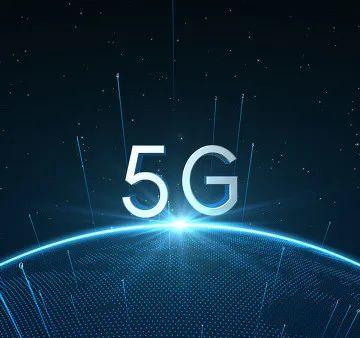Recently, Xiao Yaqing, minister of the Ministry of Industry and Information Technology, said that while developing 5G, consider the evolution direction and evolution technology route of the next generation of communication technology, and plan in advance for the development of the next generation of communication technology 6G and make a good deployment in advance. In addition to the domestic, the United States, Russia, Japan and the European Union are all intensively carrying out 6G research, and the 6G competition pattern is accelerating.

6G competition is on the rise
On November 3, 2019, the Ministry of Science and Technology of the Mainland organized a kick-off meeting for 6G technology research and development to officially start 6G research and development. The "14th Five-Year Plan for the Development of the Digital Economy" issued at the beginning of this year also proposed that the forward-looking layout of the sixth-generation mobile communication (6G) network technology reserve, increase the support for 6G technology research and development, and actively participate in promoting the international standardization of 6G. Nanjing Purple Mountain Laboratory released a major 6G achievement at the beginning of the year - 360 ~ 430GH terahertz 100Gbps real-time wireless transmission communication experimental system, terahertz wireless communication is recognized as the core technology of 6G, its huge spectrum resources can support 1Tbps communication speed.
Internationally, in February 2020, the International Telecommunication Union (ITU) convened the 34th Meeting of the Italie Working Group to officially launch research work for 2030 and beyond (6G), clarifying a timetable for ITU's early 6G research by the end of 2023.
According to ATIS, 11 companies in the United States, including Apple, Google, and Microsoft, announced the establishment of a 6G alliance in October 2020. Japanese tech giant NTT and Intel began developing 6G network technology in 2019. South Korea plans to invest 120 billion won in 2022 for research and development in the field of 6G and launch 14 6G communication satellites by 2030. The European Union has launched a three-year research project on basic 6G technologies, the main task of which is to study the next generation of forward error correction coding technology, advanced channel coding and channel modulation technology that can be used in 6G communication networks.
What can 6G bring?
At present, from the known information, the speed of 6G can reach about 50 times that of 5G, so there can be more abundant and diverse application scenarios and challenges, with a wider coverage, and even the connection between space and space can be realized, and the higher rate can realize cross-border integration and smart connection of scenarios.
Han Xia, chief engineer of the Ministry of Industry and Information Technology, said that in the future, 6G will greatly expand the mobile communication network capabilities and service boundaries, continue to deepen the scope and field of Application of the Internet of Things, effectively serve intelligent production and life, and help build a beautiful society of "intelligent connection of all things and digital twin".
Peng Mugen, executive director of the China Communications Society and executive dean of the School of Information and Communication Engineering of Beijing University of Posts and Telecommunications, said that 6G can not only bring users a more immersive and ultimate experience, meet the communication and interoperability needs of multiple senses, emotions and consciousness of human beings, but also be widely used in entertainment life, medical health, industrial production and other fields, to help the digital transformation and upgrading of various industries in the mainland and meet the various application needs of the future intelligent society.
What are the key technologies to be broken through?
The Ministry of Industry and Information Technology recently released the "14th Five-Year Plan for the Development of the Information and Communication Industry" to carry out research and development of 6G basic theory and key technologies. In terms of core technology research, we will increase the support for the research and development of network technologies such as optical communications, millimeter waves, 5G enhancements, 6G, and quantum communications, track the research of open wireless network technologies, and accelerate the industrialization and application promotion of communication network chips, devices and facilities.
The 6G white paper "Key Drivers and Research Challenges of 6G Wireless Intelligence Ubiquitous" drawn up by the world's first 6G Summit gives several key indicators to measure 6G technology: the peak transmission speed reaches 100Gbps ~ 1Tbps, while 5G is only 10Gpbs; indoor positioning accuracy is 10 cm, outdoor 1 meter, 10 times higher than 5G The communication delay is 0.1 milliseconds, which is one-tenth of 5G; ultra-high reliability, the probability of interruption is less than one millionth; ultra-high density, the density of connected devices reaches more than 100 per cubic meter. In addition, 6G will use terahertz band communication, and the network capacity will be greatly increased.
In addition, dynamic spectrum sharing technology, intelligent hypersurface technology, cellular-free large-scale MIMO technology, NOMA technology, etc., are also potential application directions in the development process of 6G technology.